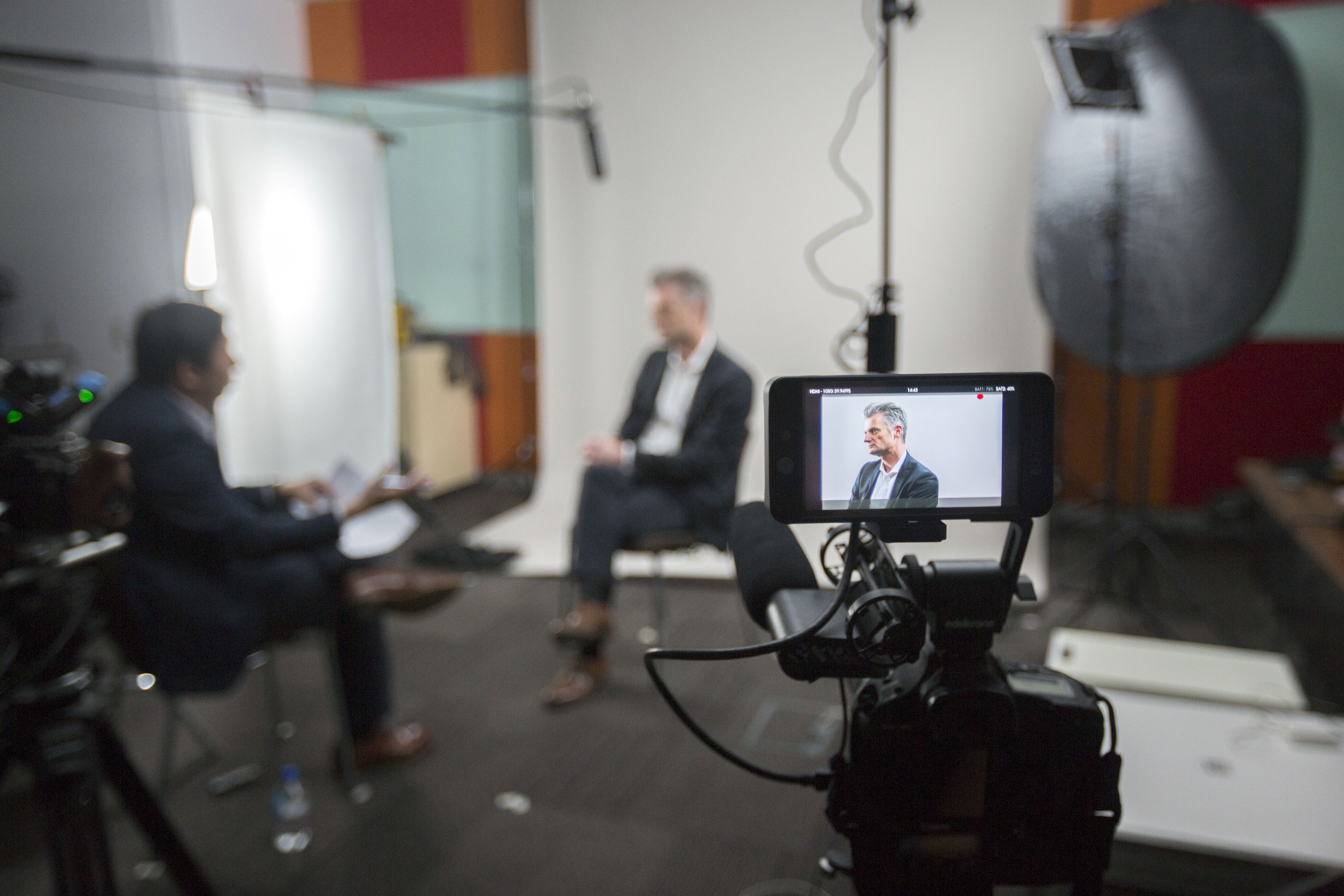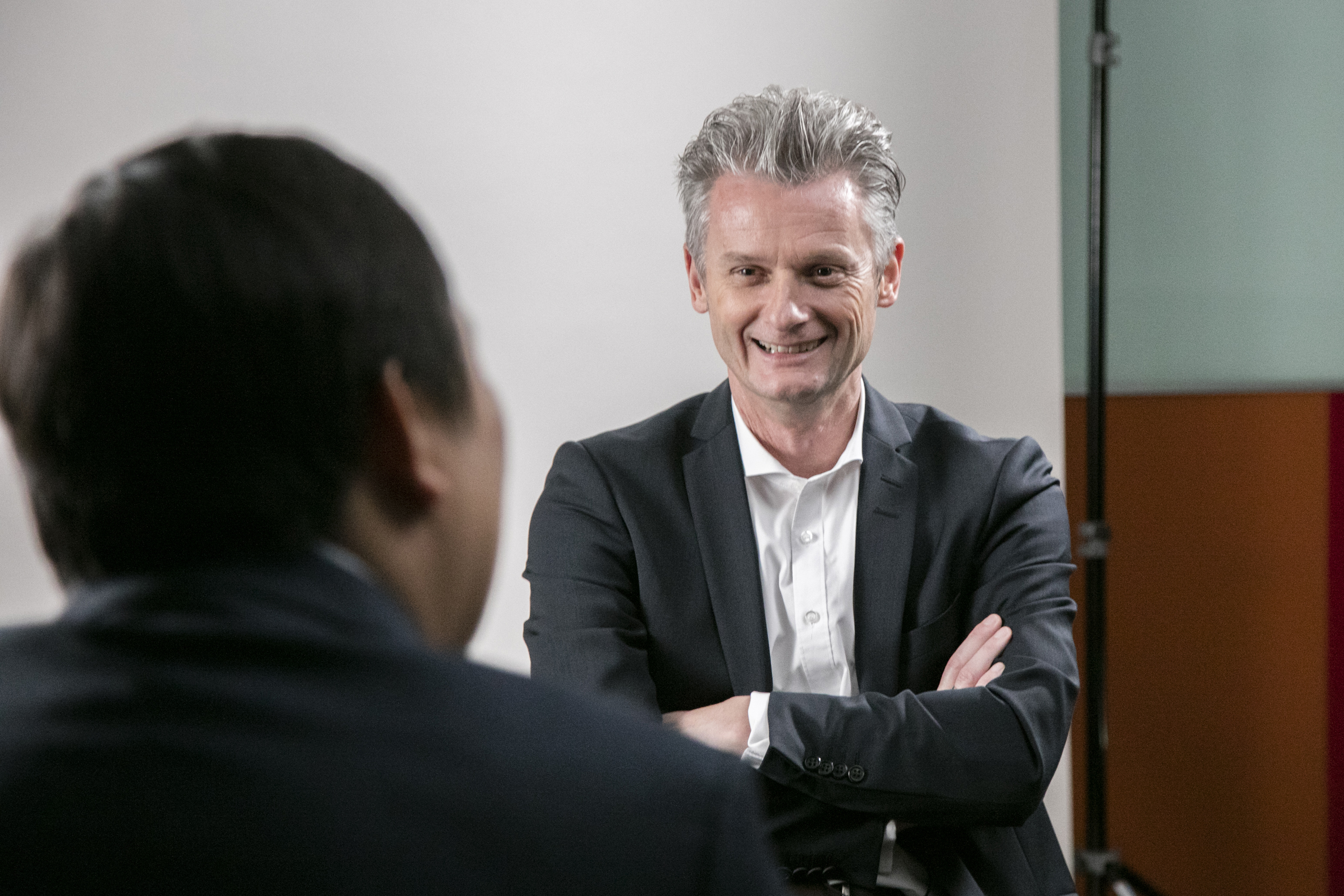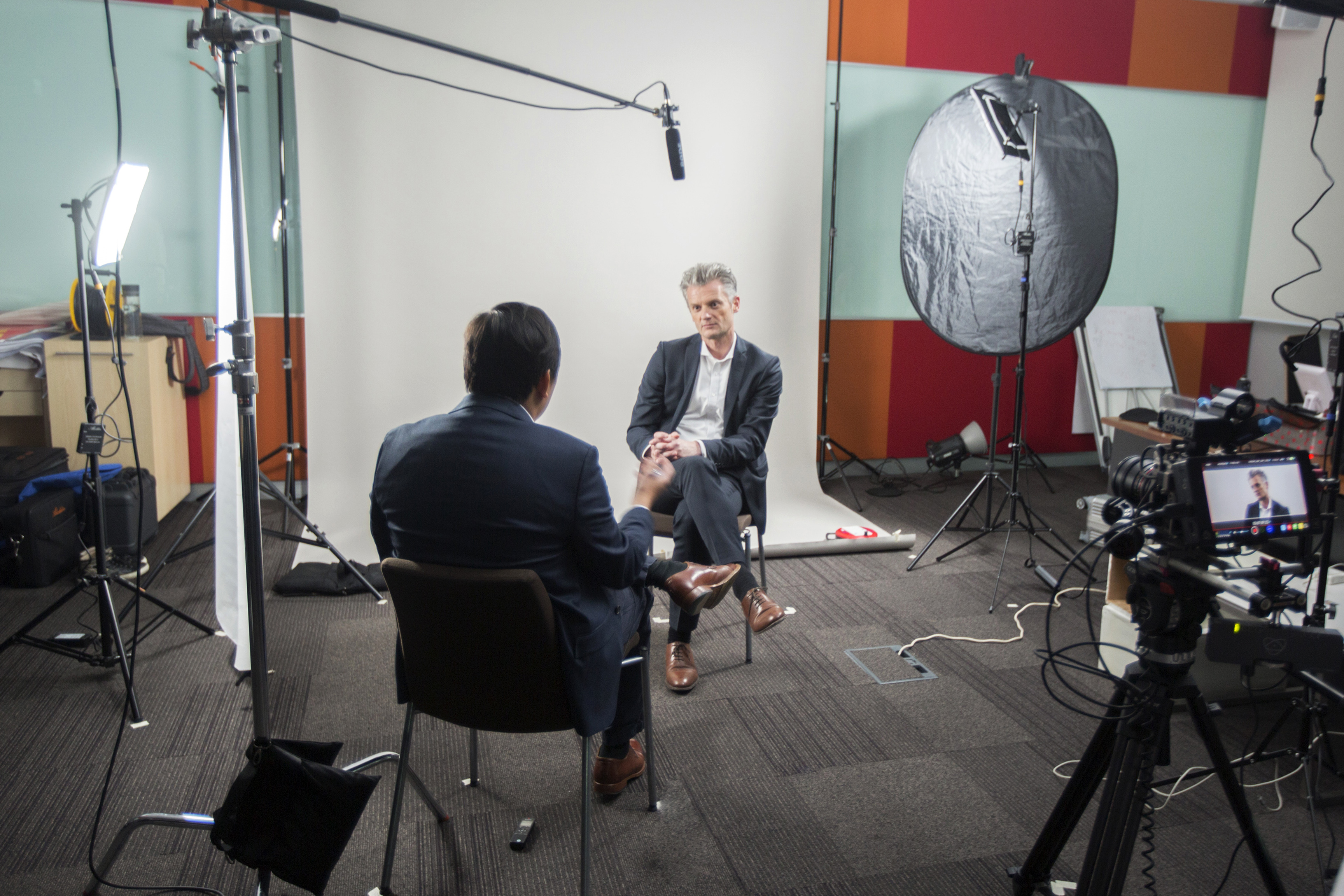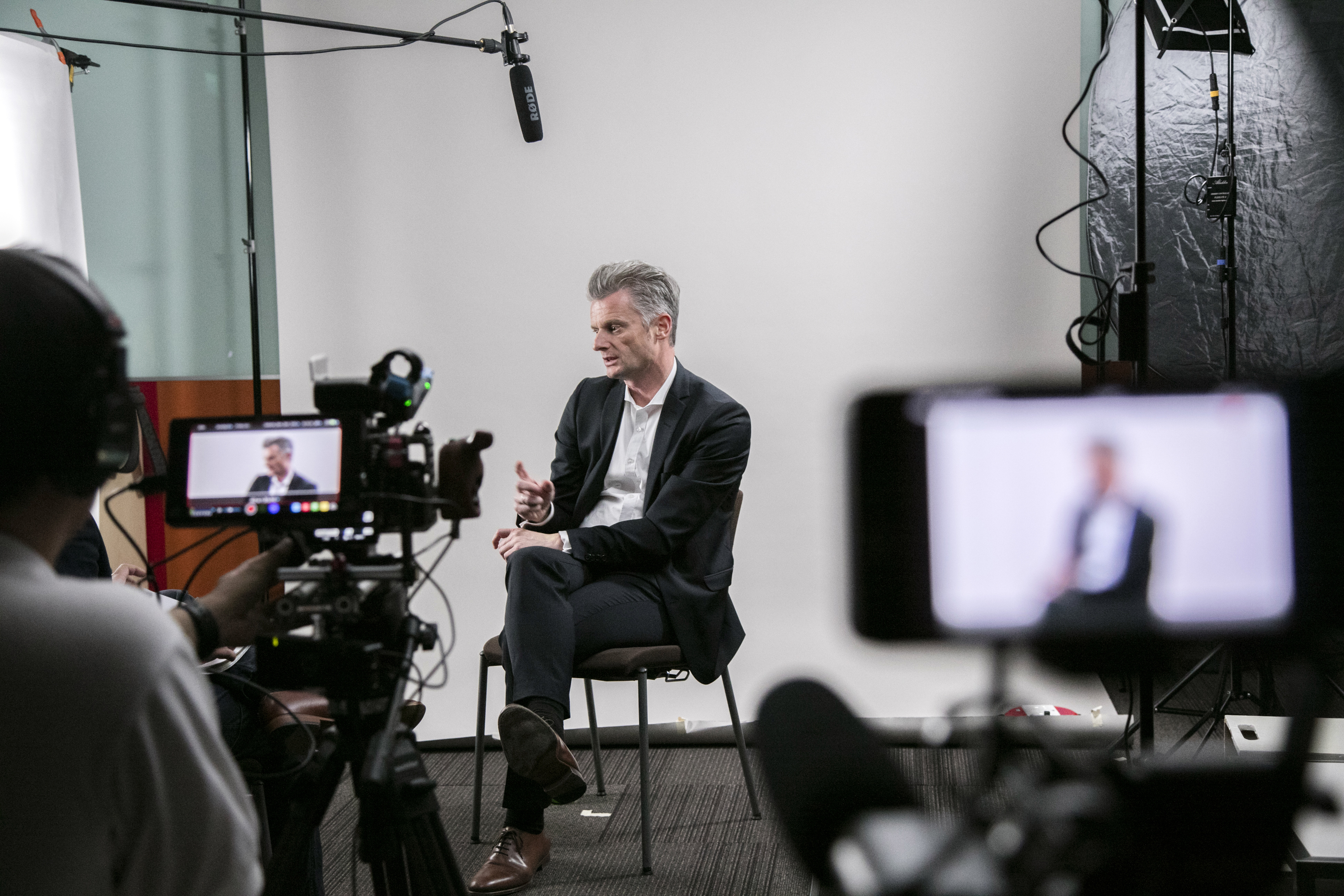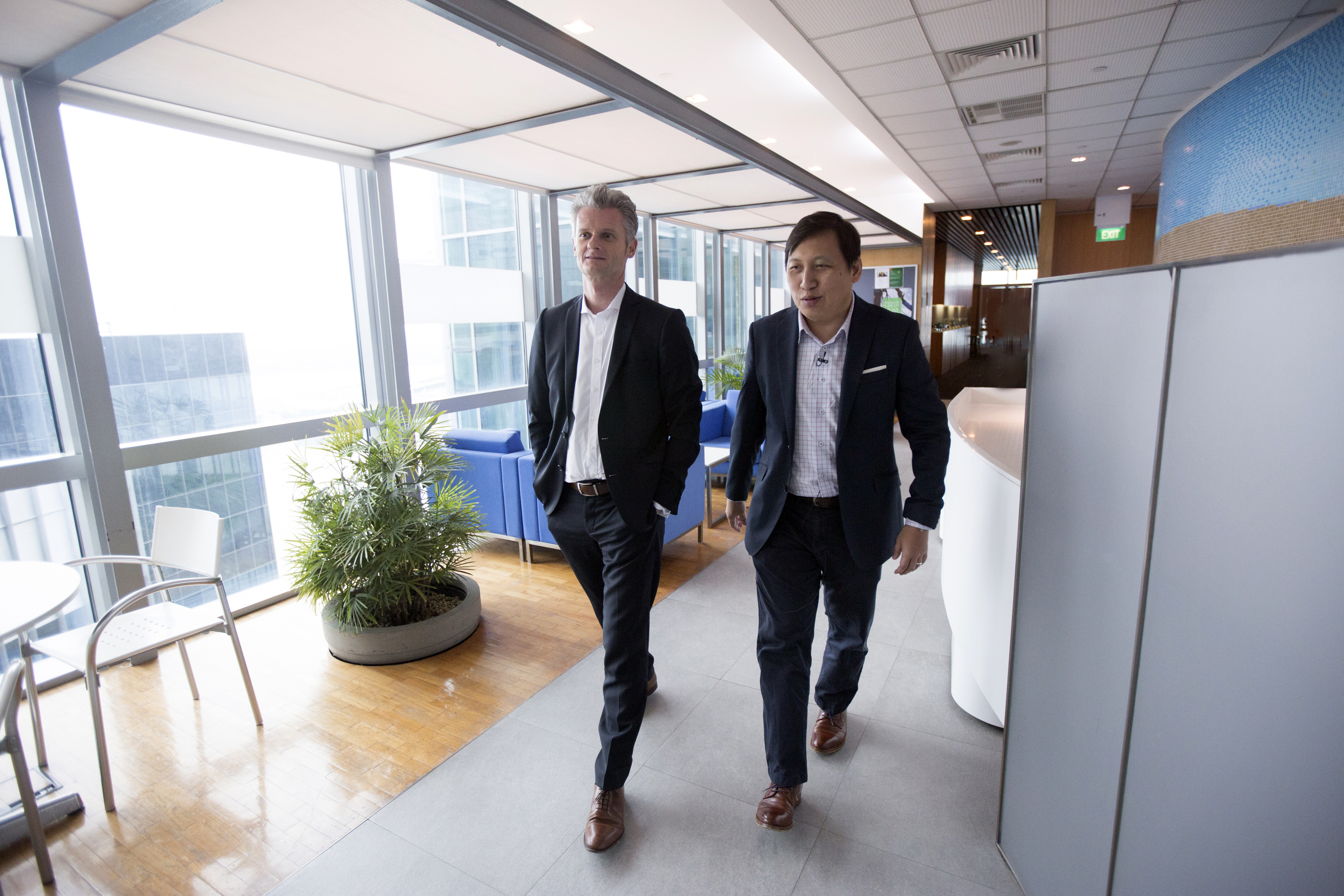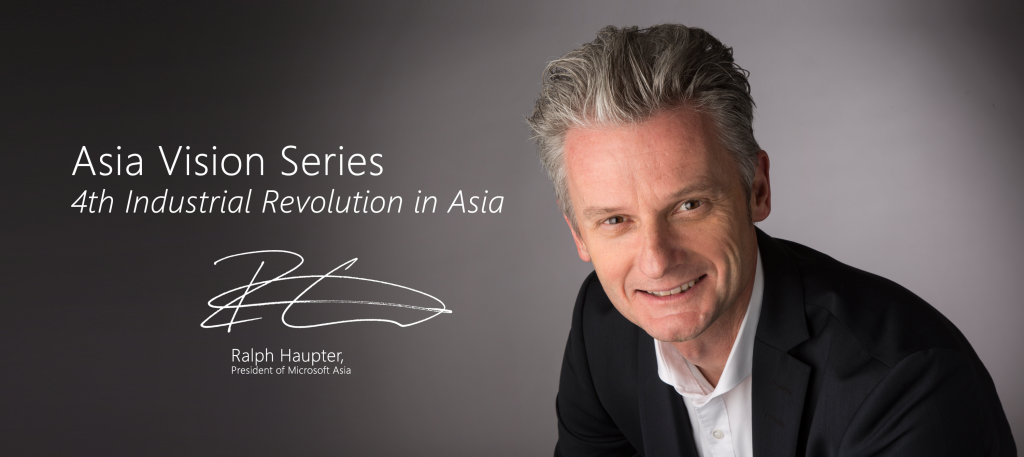
Smarter leadership through data intelligence
In our Asia Vision Series features, we dive into key industry trends and issues with our subject matter experts and visionaries in the region. In part 3 of 3, Alfred Siew, a veteran journalist formerly with Singapore broadsheet The Straits Times and founding editor of a popular technology blog, interviews Ralph Haupter, president of Microsoft Asia, to discuss how business and government leaders should adapt to the 4th Industrial Revolution which is changing the way people work, live and play.
With all the buzz around digital transformation, one question often pops up: Where do I begin? Or, for those organizations that have decided to incorporate digital technologies to reinvent themselves: What is the end game?
Those are questions that inevitably surface when Ralph Haupter meets business leaders and customers, where he focuses on the importance of leadership and culture that is required in an organization’s journey to transform itself.
Without clear leadership from the top, Haupter argues, it will be tough to gain any traction. Neither will there be the necessary follow-through if there is no buy-in or belief among the rank and file of the importance of the mission, he adds.
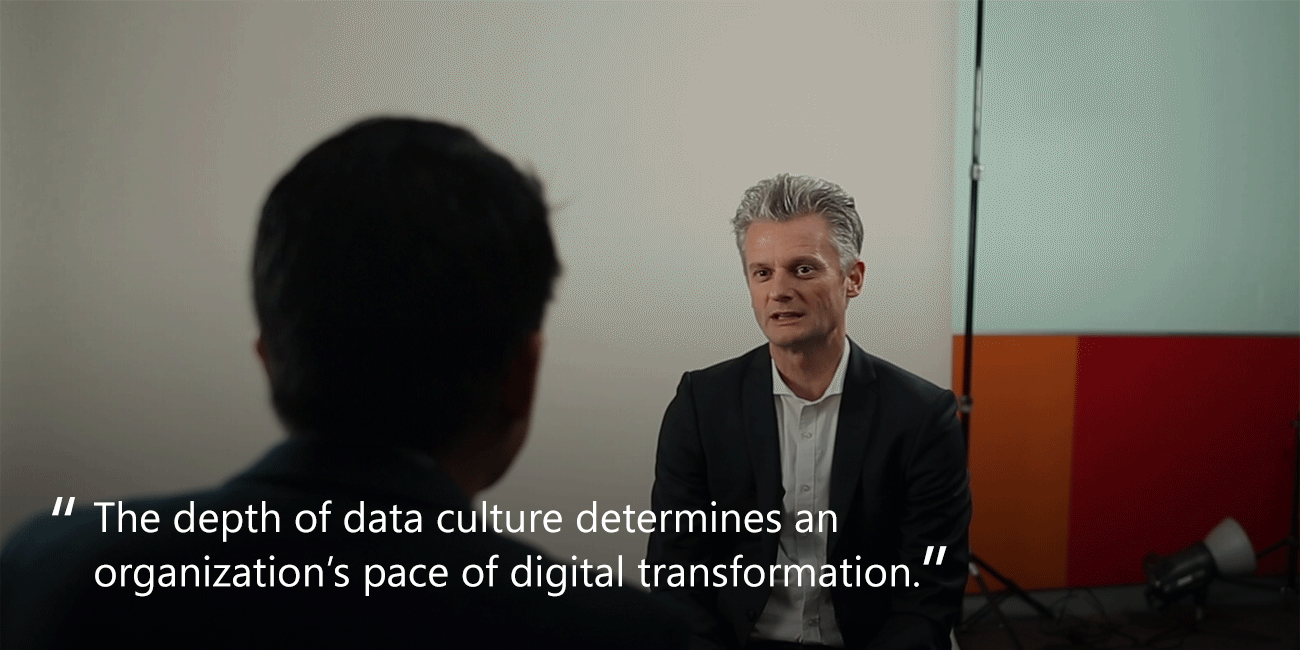
One way to get started is to appoint an executive champion within the company, such as a Chief Digital Officer. With a strong bias and background in digital technology, his or her role will be to serve the board in bringing ideas and explaining how digital technologies will make a difference.
Another way is to have a dedicated weekly agenda driving action points around digital transformation. With this, a company can look at projects, experiences, applications, and user behavior, to see what their next business objective should be.
While that takes care of the processes, the next part – having a data culture – is just as important to get the changes going. The working assumption among successful companies that are transforming their businesses is that things are not business as usual.
“Organizations need to review how they can leverage data intelligence in their operations – such as through exploiting existing data sets, or by exploring collecting information for analysis. For example, in healthcare, nurses in a hospital can be more efficient with ready access to patient data on the go. In agriculture, farms can place sensors to better predict weather conditions, and even optimize the results of livestock breeding,” says Haupter.
Building a culture where employees aspire to learn to stay relevant is crucial, Haupter believes. This data culture is something that Asian enterprises are increasingly looking to, he adds, based on his exchanges with other business leaders.
Key to this is data-driven decision making – not just at the boardroom level but across the entire organization. What does the data collected from various touch points say about a situation? Can a decision be made based on this evidence, rather than intuition alone?
Already, this is happening in organizations across Asia. At Bank SinoPac in Taiwan, marketing resources are allocated based on analytics tools that help it understand the spending habits of each customer segment it wants to target. After identifying, say, the habits of working professionals in the market, it provides special offers through select channels and promote spending via its credit cards.
In New Zealand, TradeMe is the country’s largest online classifieds and auction site featuring everything from trinkets to houses – and it is turning data into gold. With 3.7 million active members, employees draw insights from their business intelligence team to get a better sense of the company’s performance. The information is critical to answering daily questions such as how many sales transactions and new listings are there in a week? How many users are using the site at a certain time? These insights empower managers with the knowledge to take more immediate and efficient actions to remedy sales declines, such as boosting particular segments where needed. All of this can now be logically based on real-time data insights, instead of going merely by gut feel.
These two examples, according to Haupter, are just the tip of the iceberg in showing the momentum across various verticals in Asia’s digital transformation journey.
Yet, this data culture does not mean being dogmatic either, he says. The quality of the data is important, and so is the human factor – the decision maker needs to shape their decisions based on what the data continually tells them and temper it with their experience and knowledge, he points out.
“Often, this is not about taking an absolute left or right turn, like in a train,” Haupter explains. “For example, a sales executive may look at the data presented to him to decide how to price a product, but needs to also be agile to adjust this dynamically when he gets new information.”
Millennials make a difference
At the same time, do not underestimate the momentum that young workers, especially millennials, can contribute to make the transformation journey successful, says Haupter.
“Millennials are digital natives, they use technology – very intensively, and are typically quite up to speed with trends and opinionated, so the status quo of doing things is often challenged,” he notes.
Companies can tap on this enthusiasm to build a data culture. The challenge is to have these millennials integrated into the transformation journey, and make them a key driver, he adds. It is important to listen to different ideas as part of a holistic approach.
Related to the introduction of millennials in the workplace are the evolving user perceptions and expectations of data privacy. While organizations can transform their businesses, this often requires the buy-in from customers over the use of their information.
“People don’t use technology that they don’t trust. If they understand how their data is used, they can be confident about sharing, whether it is for a healthcare app or simply tracking one’s run. Trust and security are critical ingredients in making digital transformation work,” says Haupter.
Beyond the millennials, countries need to start thinking about equipping the next generation with the right skills in an increasingly digital world.
Moving forward, with the growing focus on data intelligence, schools should urgently prioritize equipping youths with the fundamental digital skills required for the jobs of tomorrow, he adds.
“We should all encourage technology or STEM (science, technology, engineering, mathematics) education to be a fundamental part of the school curriculum. More can be done in incorporating technology as a theme, and making it almost like a language module as one might take up Chinese, Spanish, French, German, or English,” explains Haupter. “For instance, picking up coding and other digital skills develops fundamentals such as computational thinking, problem solving, and creativity. With a better sense of how technology actually works, he or she will be ready for the future workplace amid the rise of the 4th Industrial Revolution.”
 Ralph Haupter
Ralph Haupter
President, Microsoft Asia
Based in Singapore, Ralph Haupter leads Microsoft’s business in a dynamic region that includes 17 subsidiaries in 42 territories and countries, over 17,000 employees, and over 100,000 partners. He is responsible for all of Microsoft’s product, service and support offerings across the region, and accelerating the company’s current transformation to being the leading productivity and platform company for the mobile-first, cloud-first era. A key area of focus for Haupter is enabling Microsoft’s customers in Asia to accelerate momentum, as they embark on their own journey of digital transformation.
 Alfred Siew
Alfred Siew
Alfred is a writer and speaker with close to 20 years of experience in journalism and communications in Singapore and Southeast Asia. Previously a technology correspondent with Singapore’s national broadsheet The Straits Times, he has covered the regional technology scene for over a decade. He now runs a popular technology blog – which is keenly followed by consumers, CEOs and government regulators alike, as well as his own editorial consultancy firm.





